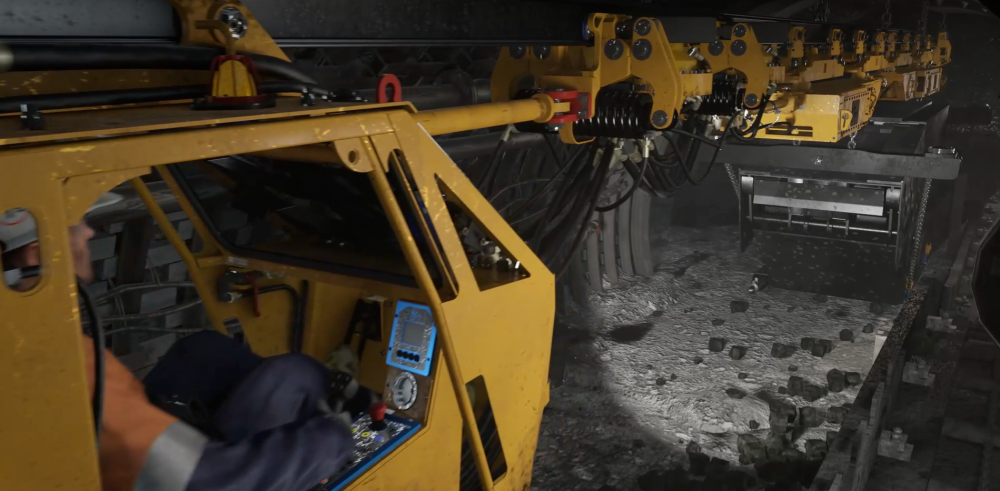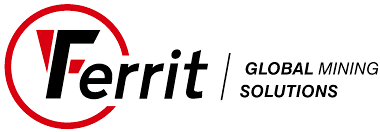
Suspended monorails have long been a trusted mode of transport in mines and are one of the most practical and efficient options for moving workers and equipment in and around a mine site.
They help to streamline all logistics related to materials and workers’ movements and help reduce transit times and support route development within the mine.
These transportation systems are one of the most secure and affordable and are very robust in the provision of continuous service in moving all types of technical and operational materials, as well as work crews, leading to high dependability and safety records.
As tracks for monorail systems are attached to the ceilings of the mineshafts, there is little need to remove pre-existing transport infrastructure, like ground rail tracks, unless absolutely necessary.
Sustainable installation
Monorail components and fittings can be reused multiple times, making it one of the most competitive and adaptable transport systems for mines. A monorail track system also weighs less than half that of a similar-length ground rail network, resulting in savings when moving monorail track infrastructure to new mine excavation areas.
These benefits are further strengthened by the fact that compared to other transportation systems, monorail track requires the least amount of assembly, disassembly, and maintenance. This further leads to minimal impacts of mining and geological variables on the conditions of transit routes.
Monorail locomotives or manipulators can be powered by diesel, electric, or pneumatic motors, and can be used as autonomous traction devices for manipulation and transport.
Both locomotives and manipulators are equipped with friction driving units, and Ferrit, leading [company info here] evaluates how many and what types are needed to achieve traction forces required by customers for their transport solution.
Wide range of accessories and equipment
Starting with the track itself and continuing with monorail locomotives and manipulators, lifting and manipulating tools, cabins for transporting people and medical support, material containers, and specially made tools, Ferrit’s production includes a full line of equipment specifically made for monorail transportation systems.
Ferrit has a broad range of equipment that complements and supports all its rail systems, including:
- Suspended monorail tracks
- Diesel locomotives
- Accumulator locomotives
- Diesel manipulators
- Electric manipulators
- Lifting equipment cabins
- Containers
- Accessories
An important feature of some of these monorail systems is that they can easily shift very heavy loads of up to 40 tons. This makes operations to open new shafts and tunnels extremely effective as this ability enables heavy equipment, such as the Suspended Hydraulic Winch and Powered roof supports, to be translocated within the mine without their needing to be disassembled.
Suspended monorail systems enable mines to have tunnels that have much smaller cross-sections and steeper slopes than ground rail systems. This can result in significant cost savings.
Ground rails need tunnels with a cross-section of at least 18m2 and an inclination of up to 15 degrees. However, suspended rail systems can function with tunnel cross sections as small as 8m2 with a 30-degree incline, or 40 degrees when adding the rack-and-pinion option.
Therefore, a suspended rail system can be much more cost-effective when planning or expanding mines.
Ferrit’s monorail systems
Diesel-powered
Ferrit’s most powerful and latest autonomous monorail locomotive is designed to move loads on horizontal or inclined tracks (up to ± 30°) in underground mines and on the surface. It has the entire inventory of accessories and additional equipment that the Ferrit monorail systems are known for.
This most recent addition to the Ferrit stable comes with four to 12 driving unit options to shift heavy loads. It is a quick locomotive with onboard diagnostic and monitoring capabilities and can have a camera system that provides a complete view around the machine.
Technical parameters:
- Engine power: 142 kW
- Number of drive units: 4 – 12
- Max. speed: 7,2 km/h
- Max. traction force: 330 kN
Only slightly less powerful than the DLZ210F, this has been Ferrit’s most popular monorail system in recent years. It can have between four to eight drive units, as well as a whole host of features and equipment that can help any mine get the most efficient monorail systems for their requirements.
Technical parameters:
- Engine power: 100 kW
- Number of drive units: 4 – 10
- Max. speed: 7,2 km/h
- Max. traction force: 250 kN
Other diesel-powered systems:
Electric-powered
This autonomous battery-powered suspended monorail mining locomotive is used for the transportation of train sets on suspended monorail tracks both underground and above ground. They work best on flat surfaces and can comfortably climb and descend shaft angles up to ±30°.
Two separate driver cabins, a power source section suspended on TZH4/8F-ZA hydraulic transport equipment, an auxiliary section, and two to six driving units make up the locomotive. All component sections are linked by connecting rods, allowing for further equipment to be attached.
Technical parameters:
- Engine power: 8 x 7,5 kW
- Number of drive units: 4
- Max. speed: 7,2 km/h
- Max. traction force: 120 kN
Except for the fact that it accommodates inclinations of up to 20 degrees, this locomotive’s component complement is almost identical to that of the DLZA90F system. A solid-electrolyte lead cell or a liquid electrolyte lead cell may be installed in the battery container (gel cells).
The REM-CON-** remote control can also be used to operate the locomotive. It is certified as a Group I device, category M2, and therefore can be installed in mines where there are risks of gas and coal dust explosions.
Technical parameters:
- Engine power: 4 x 7,5 kW
- Number of drive units: 2
- Max. speed: 7,2 km/h
- Max. traction force: 60 kN
Further details:
For more details and sales information, please visit Ferrit’s suspended monorail page.


